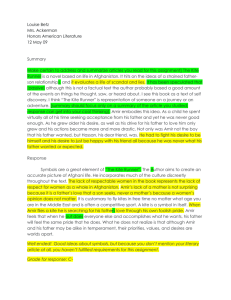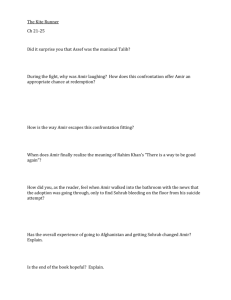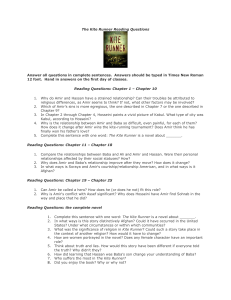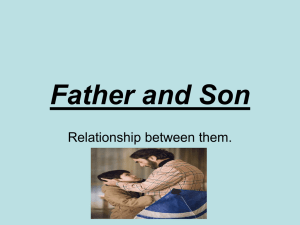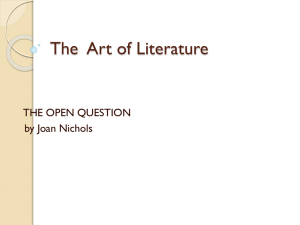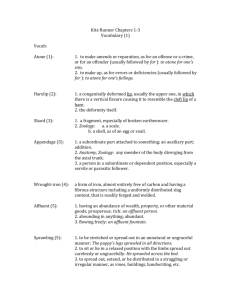The Story of a Life and a Kite Running Tournament Estera Pirosca
advertisement
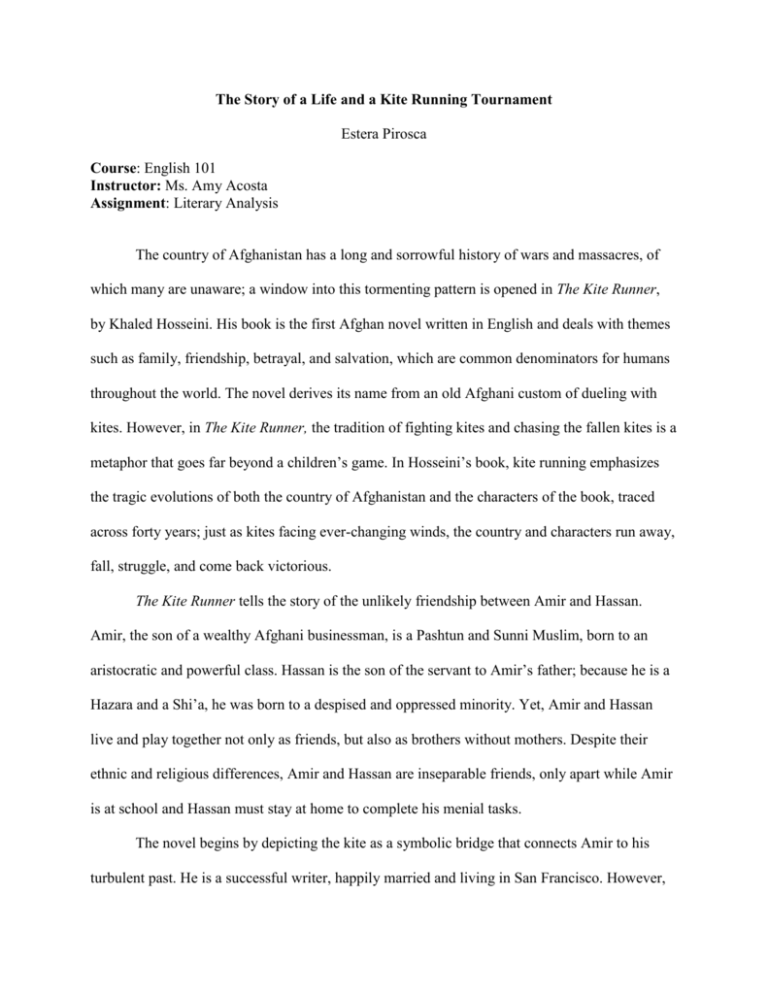
The Story of a Life and a Kite Running Tournament Estera Pirosca Course: English 101 Instructor: Ms. Amy Acosta Assignment: Literary Analysis The country of Afghanistan has a long and sorrowful history of wars and massacres, of which many are unaware; a window into this tormenting pattern is opened in The Kite Runner, by Khaled Hosseini. His book is the first Afghan novel written in English and deals with themes such as family, friendship, betrayal, and salvation, which are common denominators for humans throughout the world. The novel derives its name from an old Afghani custom of dueling with kites. However, in The Kite Runner, the tradition of fighting kites and chasing the fallen kites is a metaphor that goes far beyond a children’s game. In Hosseini’s book, kite running emphasizes the tragic evolutions of both the country of Afghanistan and the characters of the book, traced across forty years; just as kites facing ever-changing winds, the country and characters run away, fall, struggle, and come back victorious. The Kite Runner tells the story of the unlikely friendship between Amir and Hassan. Amir, the son of a wealthy Afghani businessman, is a Pashtun and Sunni Muslim, born to an aristocratic and powerful class. Hassan is the son of the servant to Amir’s father; because he is a Hazara and a Shi’a, he was born to a despised and oppressed minority. Yet, Amir and Hassan live and play together not only as friends, but also as brothers without mothers. Despite their ethnic and religious differences, Amir and Hassan are inseparable friends, only apart while Amir is at school and Hassan must stay at home to complete his menial tasks. The novel begins by depicting the kite as a symbolic bridge that connects Amir to his turbulent past. He is a successful writer, happily married and living in San Francisco. However, he remembers with sadness and shame the Afghanistan of his childhood. As he walks through a park in the city, he sees “a pair of kites, red with long blue tails, soaring in the sky. They danced high above the trees on the west end of the park, . . . floating side by side like a pair of eyes looking down on San Francisco, the city I now call home” (1-2). These kites bring to life the memory of his old friend, Hassan. The reader then is brought thirty years back to a city once at peace, where children are waiting eagerly for the arrival of winter. Hosseini vividly portrays the kite running tournament when Amir and Hassan have the run of Kabul’s streets. He describes in detail the preparations when, “every winter, districts in Kabul held a kite-fighting tournament. And if you were a boy living in Kabul, the day of the tournament was undeniably the highlight of the cold season” (4950). In a kite fight, competitors coat their kite strings in glue and shards of glass–the better to cut their rival’s moorings. While the fighter’s kite is struggling to cut the string of the opponents’ kites and to rule the skies, his kite running partner is racing to chase down the opponents’ kites and to catch them. As for the rules, Amir says that they were simple: “No rules. Fly your kite. Cut the opponents. Good luck” (52). Amir’s statements about the rules of the game are prophetic for the near future that awaits him at this young age. Specifically, the symbol of the fighting kites encapsulates Amir’s struggle to win his father’s love and approval. Just as in the tournament, he acts with no rules, even if this brings shame, guilt, and hurt. Amir recognizes that, during the winter, “the chill between Baba and me thawed a little. And the reason for that was the kites” (49). Therefore, Amir struggles to win the tournament because “kites were the one paper thin slice of intersection between” him and Baba (49). However, like a kite facing an ever-changing wind, his plan is boycotted by regretful events: his friend Hassan suffers horrific abuse from some teenagers in the neighborhood, while he faithfully chases the last kite for Amir. After the terrible event, Amir intentionally estranges himself from Hassan, thereby losing a close friend; his relationship with his father also improves only for a brief time, as if merely a mirage that quickly fades away. As the story unfolds, the kite running tournament of Amir’s life brings him to America, as a young immigrant, along with his father. He struggles to make a living in the Afghan sector of California and to deal with his father’s problems of adjustment to a new culture. Realizing his father’s inability to adapt, Amir comments, “A year and a half since we’d stepped off the Boeing from Peshawar, and Baba was still adjusting. . . . Baba was like the widower who remarries but can’t let go of his dead wife. . . . [H]e missed the sugarcane fields of Jalalabad. He missed people milling in and out of his house” (129). Like the young lives of Amir and Hassan, Afghanistan’s tumultuous history also is similar to Afghan kite flying–constant duels between rivals. Continually struggling to keep its symbolic kite afloat, the Afghanistan monarchy, nevertheless, was overtaken by the Soviet regime from 1979 until 1989 and then by the repressive Taliban from 1996 until 2001 (36, 199, 362). Amir learns of these atrocities when he suddenly is called back to Afghanistan, after having been in the United States for nearly thirty years. First, the cab driver tells him, “terrible what is happening in your country, yar” (195). Then, his old friend Rahim Khan brings him up to date with Afghanistan’s destruction and degradation. He recounts times when “people were so tired of the constant fighting, tired of the rockets, the gunfire, the explosions, tired of watching Gulbuddin and his cohorts firing on anything that moved” (200). Disdained as a bloody war, this period also can be described as a duel between Afghanistan and foreign kite flyers, wherein the enemies seared and fragmented Afghanistan. Near the end of the novel, the analogy between kite running and Amir’s life is revived. Specifically, Amir then tries to make amends for his old act of betrayal by saving Hassan’s orphaned son, Sohrab, from a Taliban warlord who had kidnapped him. Because the warlord turns out to be the malefic Assef–the person who abused Hassan in his teenage years–this battle is one Amir must win. Prior to their duel, when Amir and Assef are alone in the room, Amir astutely notes Assef’s actions; he remarks, “Assef put down his prayer beads. Reached in the breast pocket of his black vest. What he fished out of that pocket didn’t surprise me one bit: stainless-steel brass knuckles” (287). What follows is a terrible fight from which Amir is saved by Sohrab. The kite running tournament continues, both concretely and metaphorically, when Amir returns to America. Now, Amir kite runs for Hassan’s son, Sohrab, who began a new life with him in America after having rescued Amir from Assef’s wrath. Of this kite running, Amir notes that he “hadn’t flown a kite in a quarter of a century, but suddenly I was twelve again and all the old instincts came rushing back” (368). With the kite now in Amir’s hands, the evil voices of the past are silenced by optimistic thoughts of a better future. The kite is an important thread that ties the novel together. Hosseini frames the book in a symmetrical way, starting and ending it with a kite fight. He also authentically portrays Amir’s life as following a constantly-changing wind, just like a kite. Tellingly, Amir notes in the last chapter of the novel, “Afghans like to say: Life goes on, unmindful of begging, end, kamyab, nah-kam, crisis or catharsis, moving forward like a slow, dusty caravan of kochis [nomads]” (357). For him, the analogy between kite running and his life continues, as Amir persists in running and flying his kite, in spite of any opposing winds or rivals that may come his way. Work Cited Hosseini, Khaled. The Kite Runner. New York: Riverhead, 2004. Ms. Acosta’s Comments: Although the symbolic significance of the kite in The Kite Runner is obvious from the title of this timely novel, Estera writes a profound analysis of tragic characters battling their own wars in a ravaged Afghanistan.
